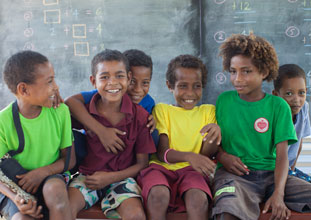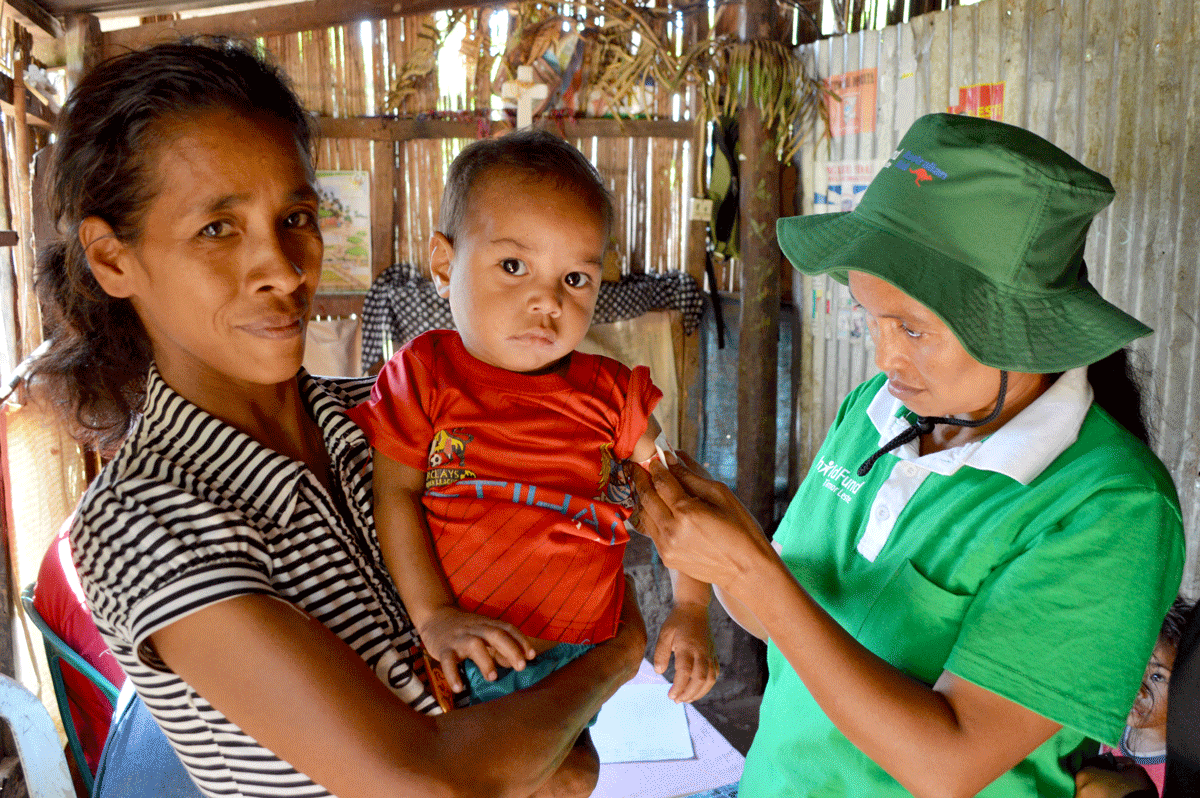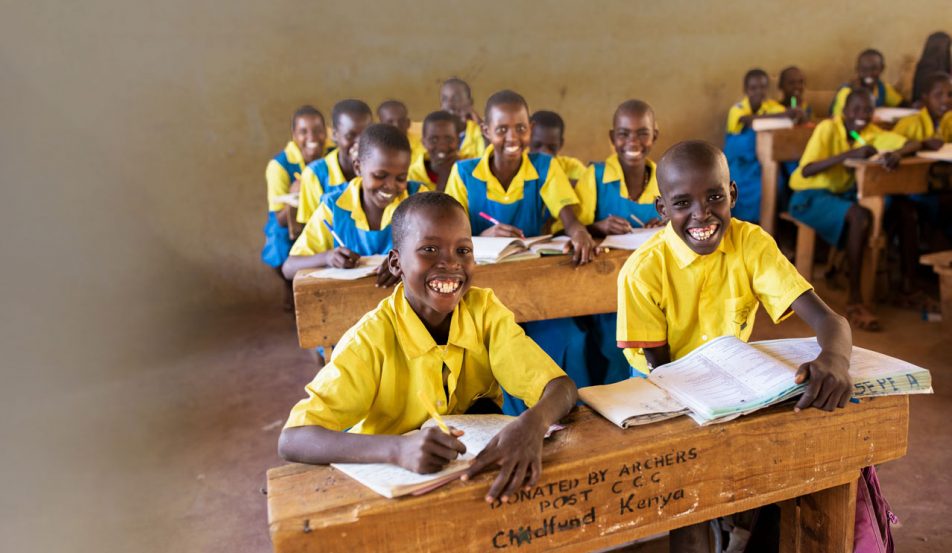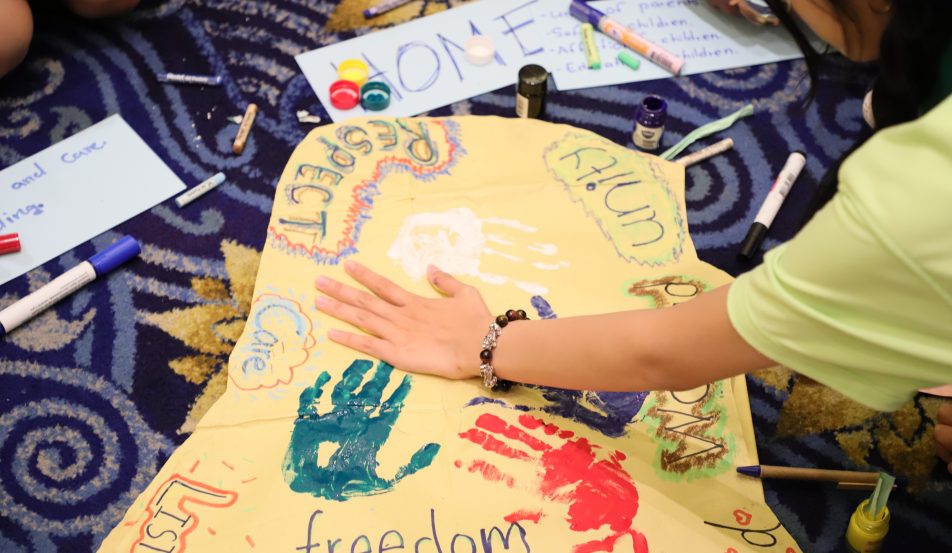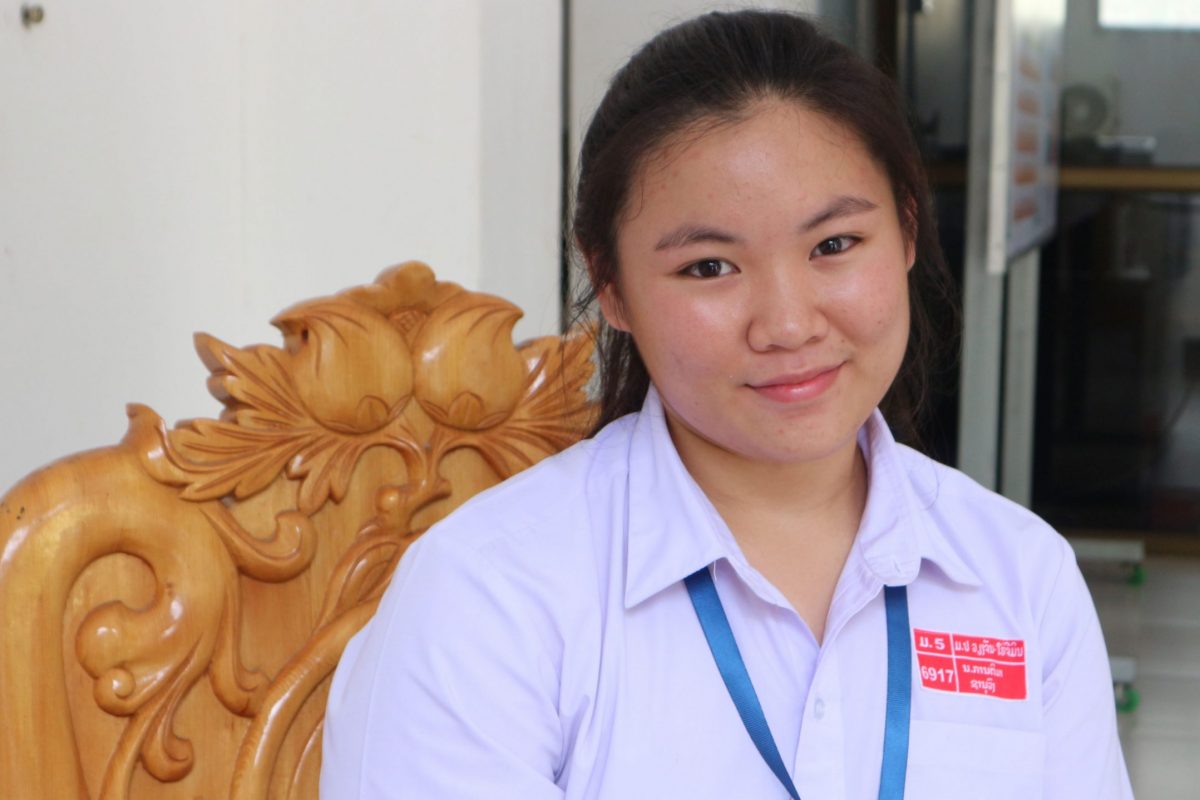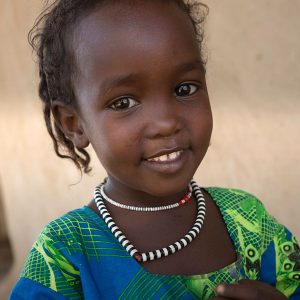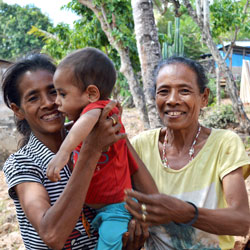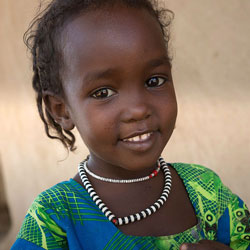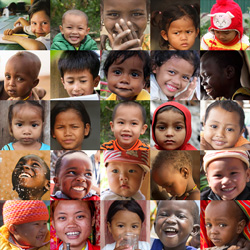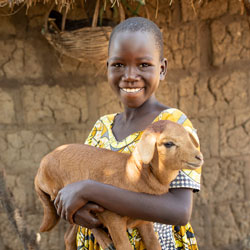As they spent more times in ChildFund’s Ready for Life activities, practising speaking out, both children started gaining confidence.
“I may have already had the ability or the knowledge to speak in a forum or participate in these kinds of activities, but it was after joining ChildFund’s activities that I could develop these abilities and learn to use them,” Xaykham said.
Learning from differences
Xaykham and Namfonh agreed that the best part of the Children’s Forum was getting to meet and learn from other passionate young people from different schools and places.
“The thing I liked most was learning from the experiences and challenges youth in other provinces face, and what solutions they have for addressing these problems,” Xaykham said.
Namfonh shared this same eagerness to learn from children from different backgrounds. “There were probably 100 people there, and everyone’s thinking was different from our own,” she said.
In particular, both children emphasised the differences between youth from urban Vientiane and the other two more rural provinces participating in the forum, and both saw this as a learning opportunity rather than a barrier.
Xaykham said he learnt that children in Vientiane tended to have more access to information and knowledge on topics such as nutrition than youth in rural areas. They, however, seemed to have limited knowledge about child poverty and the issue of disadvantage that many rural children face.
Namfonh affirmed that even young people in urban areas like Vientiane with better access to information still had much to learn from their rural counterparts. “City kids have one kind of thought, and children from rural areas might think differently from us,” she said. “We need to have the chance for them to voice their ideas so that we can learn from each other.”
The differences between Vientiane and rural provinces also came out when the participants considered what they felt was the biggest issue facing youth in their communities.
Namfonh named social media as the key challenge facing young people in her community. “Learning using technology can be a good way for us to learn new things, but most young people use it in a way that isn’t useful, such as playing on their phones while they should be studying,” Namfonh said. She admitted that the issues were likely not the same in other communities in Laos. “I think in rural areas, the problem is more about having access to technology in the first place.”
When asked about the priorities in his community, Xaykham talked about parents and youth not prioritising education, and more generally gaps in communication between parents and children. “One of the major problems in my district is youth not being interested in education,” he said. “Because maybe parents leave it to their children whether or not to stay in school, and some parents aren’t dedicated.”
Hope for the future
Despite the challenges these two young people see in their communities, both of them are hopeful about the future of Lao children.
“In the future, children will dare to speak out, share their ideas, and participate in society,” Namfonh said. “They’ll be able to access quality information, and will have skills and show their capacities in their daily lives.”
Namfonh said while children needed to actively take part in opportunities like the Children’s Forum, they also needed to keep pushing for change in their communities and for more opportunities to have their opinions and ideas heard.
“Experience is something we have to go after and pursue,” Namfonh said. “It isn’t just going to come to us; we have to walk towards it.”
